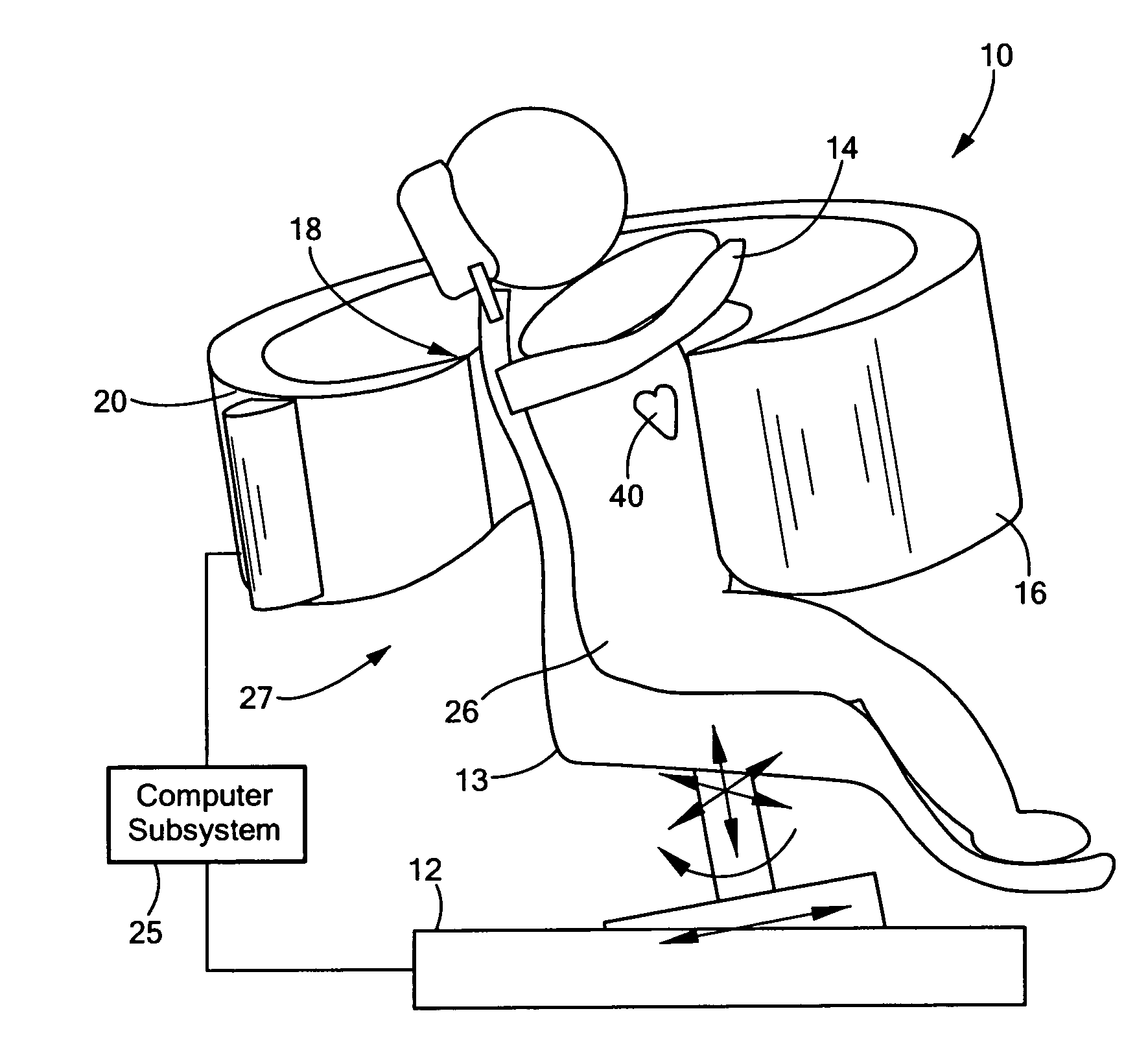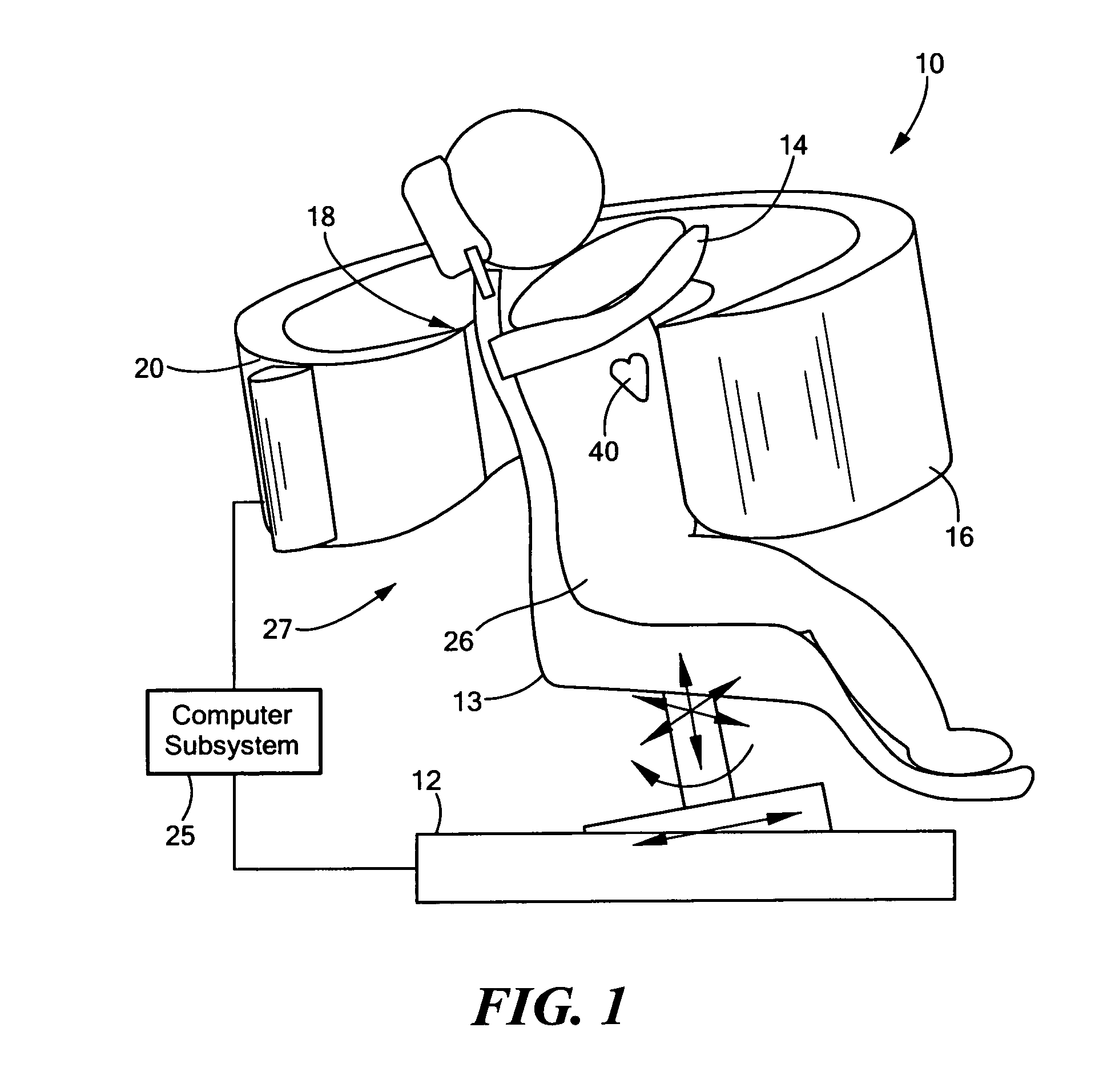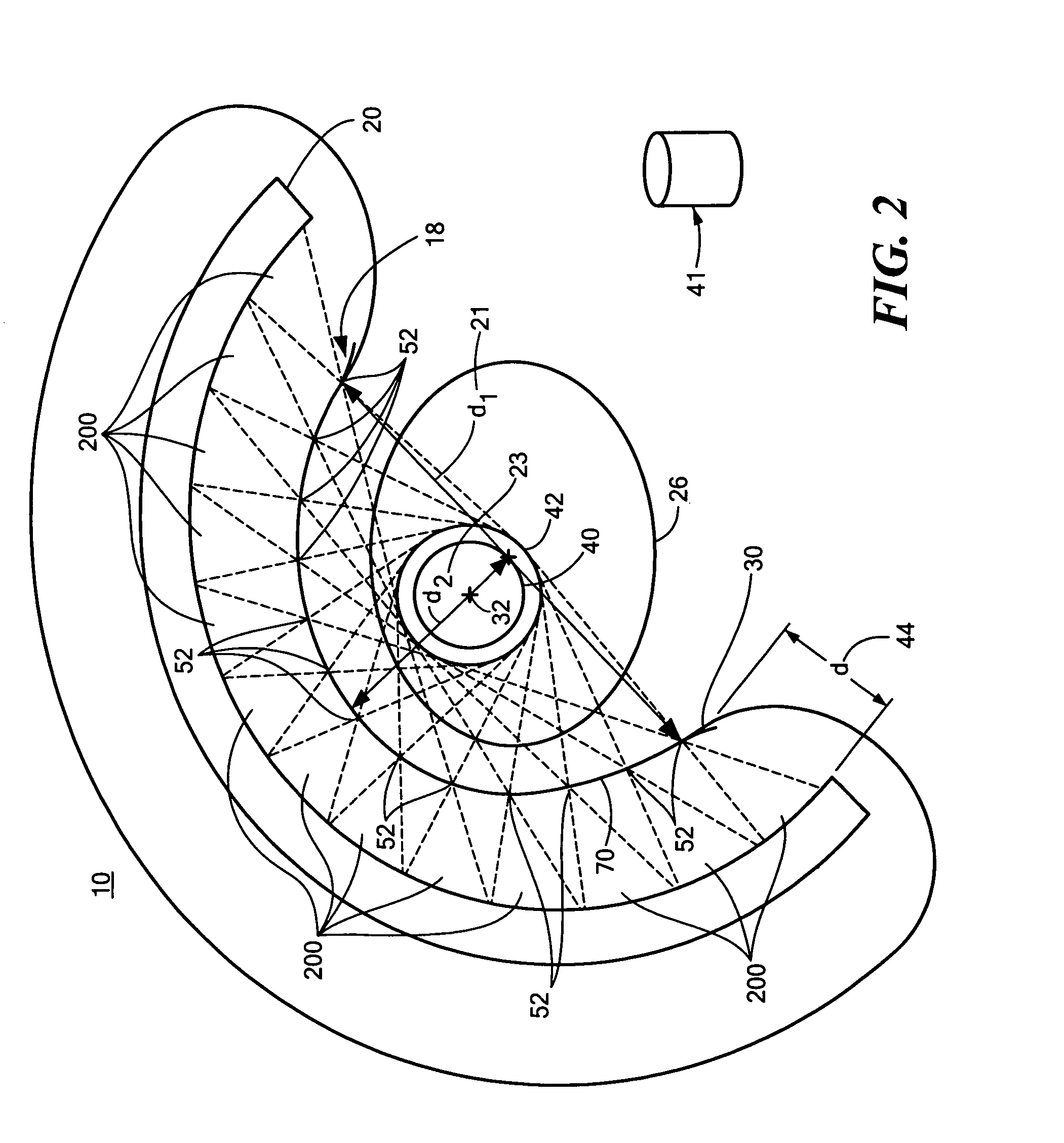Single photon emission computed tomography (SPECT) system for cardiac imaging
a computed tomography and single photon emission technology, applied in the direction of instruments, radiation measurement, measurement devices, etc., can solve the problems of low spectral photon sensitivity, limited return of heavily attenuated and scattered photons, and less than optimal circular design, etc., to improve imaging spatial resolution, improve sensitivity, and cost-effective
- Summary
- Abstract
- Description
- Claims
- Application Information
AI Technical Summary
Benefits of technology
Problems solved by technology
Method used
Image
Examples
Embodiment Construction
[0041]Aside from the preferred embodiment or embodiments disclosed below, this invention is capable of other embodiments and of being practiced or being carried out in various ways. Thus, it is to be understood that the invention is not limited in its application to the details of construction and the arrangements of components set forth in the following description or illustrated in the drawings. If only one embodiment is described herein, the claims hereof are not to be limited to that embodiment. Moreover, the claims hereof are not to be read restrictively unless there is clear and convincing evidence manifesting a certain exclusion, restriction, or disclaimer.
[0042]There is shown in FIG. 1, one embodiment of SPECT system 10 of this invention. System 10 includes collimator subsystem 18 coupled to frame 16, which is shaped to an open-arc to approximately match the thoracic contour of patient 26, as better shown, e.g., in FIGS. 2 and 3. Collimator subsystem 18, FIGS. 1-3 is fairly ...
PUM
 Login to View More
Login to View More Abstract
Description
Claims
Application Information
 Login to View More
Login to View More - R&D
- Intellectual Property
- Life Sciences
- Materials
- Tech Scout
- Unparalleled Data Quality
- Higher Quality Content
- 60% Fewer Hallucinations
Browse by: Latest US Patents, China's latest patents, Technical Efficacy Thesaurus, Application Domain, Technology Topic, Popular Technical Reports.
© 2025 PatSnap. All rights reserved.Legal|Privacy policy|Modern Slavery Act Transparency Statement|Sitemap|About US| Contact US: help@patsnap.com



